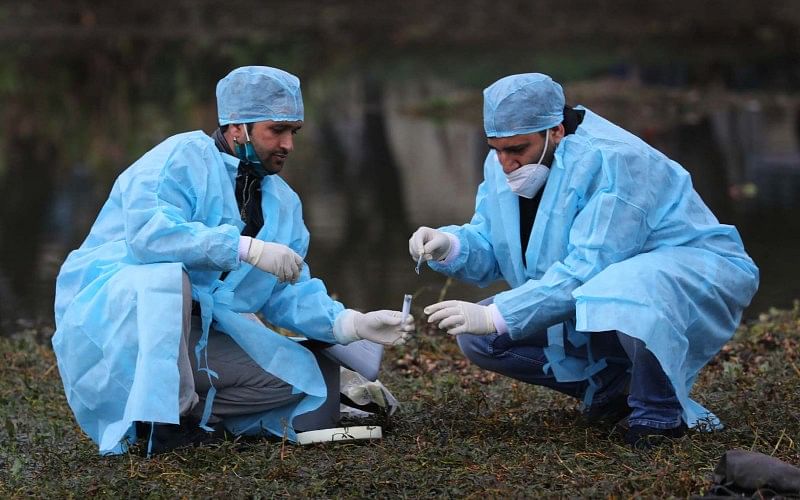As neighbouring Himachal Pradesh reported cases of bird flu, Jammu and Kashmir has sounded an alert and started collecting samples to check the health of the winged guests flocking the Union territory during winters, officials said.
The joint teams of Animal Husbandry and Wildlife departments on Tuesday visited Gharana wetland in the outskirts of Jammu and collected 25 bird droppings for testing to ascertain whether any of the birds is infected with the dreaded avian influenza, the officials said.
The J&K government has sounded an alert following reports of bird flu cases in Himachal Pradesh and issued certain guidelines as a precautionary measure, Wildlife Warden, Jammu, Anil Atri told PTI.
Atri, who along with Dr Ranjit Katoch of the Wildlife department joined the Animal Husbandry team at Gharana wetland, said all the birds present in the wetland looked healthy.
Gharana Wetland Conservation Reserve in R S Pura sector near the International Border was notified in 1981 and is home to more than 170 species of birds like bar-headed geese, gadwalls, common teals, purple swamp hens, Indian moor hens, black-winged stilts, cormorants, egrets and green shanks.
During the winter, the wetland is visited by thousands of birds from Central Asia and some of the migratory bird species visiting this wetland are endangered.
The team of Animal Husbandry Department, Jammu collected the bird dropping samples for testing, he said, adding there is no need for alarm as this is being done just as a precautionary measure in view of reported cases in HP, Rajasthan, Kerala and Madhya Pradesh to keep the wetlands safe and check the spread of the H5N8 virus.
We have alerted our staff and the public in accordance with the government guidelines like avoiding touching any animal with symptoms and wearing of proper personal protective kits. They were also asked to report immediately if they see any change in the behavior of the birds, Atri said.
Asked about the number of birds present at the wetland, he said the figure fluctuates between 1,000 and 2,000.
The number does not remain static and keeps changing as the migratory birds move from one wetland to another including those across the border. Bar-headed geese outnumber other migratory birds at the wetland,” he added.
Dr Katoch said the sampling team of the Animal Husbandry Department collected the samples which would be tested in Jalandhar.
So far, no death of any migratory or local bird was reported from the wetland. We have checked the birds and all are healthy, he said.
He added that observatory staff has been alerted to keep an eye on the birds.






